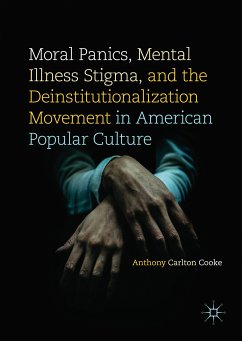This book argues that cultural fascination with the "madperson" stems from the contemporaneous increase of chronically mentally ill persons in public life due to deinstitutionalization-the mental health reform movement leading to the closure of many asylums in favor of outpatient care. Anthony Carlton Cooke explores the reciprocal spheres of influence between deinstitutionalization, representations of the "murderous, mentally ill individual" in the horror, crime, and thriller genres, and the growth of public associations of violent crime with mental illness.
Dieser Download kann aus rechtlichen Gründen nur mit Rechnungsadresse in A, B, BG, CY, CZ, D, DK, EW, E, FIN, F, GR, HR, H, IRL, I, LT, L, LR, M, NL, PL, P, R, S, SLO, SK ausgeliefert werden.









